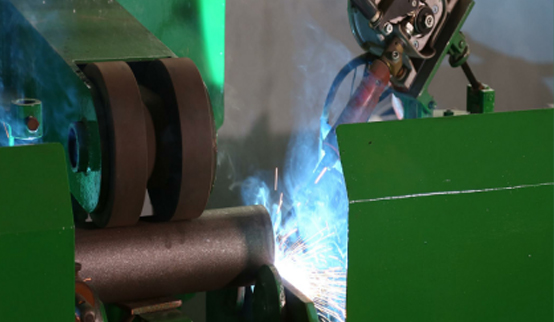 Afrikaans
Afrikaans  Albanian
Albanian  Amharic
Amharic  Arabic
Arabic  Armenian
Armenian  Azerbaijani
Azerbaijani  Basque
Basque  Belarusian
Belarusian  Bengali
Bengali  Bosnian
Bosnian  Bulgarian
Bulgarian  Catalan
Catalan  Cebuano
Cebuano  Corsican
Corsican  Croatian
Croatian  Czech
Czech  Danish
Danish  Dutch
Dutch  English
English  Esperanto
Esperanto  Estonian
Estonian  Finnish
Finnish  French
French  Frisian
Frisian  Galician
Galician  Georgian
Georgian  German
German  Greek
Greek  Gujarati
Gujarati  Haitian Creole
Haitian Creole  hausa
hausa  hawaiian
hawaiian  Hebrew
Hebrew  Hindi
Hindi  Miao
Miao  Hungarian
Hungarian  Icelandic
Icelandic  igbo
igbo  Indonesian
Indonesian  irish
irish  Italian
Italian  Japanese
Japanese  Javanese
Javanese  Kannada
Kannada  kazakh
kazakh  Khmer
Khmer  Rwandese
Rwandese  Korean
Korean  Kurdish
Kurdish  Kyrgyz
Kyrgyz  Lao
Lao  Latin
Latin  Latvian
Latvian  Lithuanian
Lithuanian  Luxembourgish
Luxembourgish  Macedonian
Macedonian  Malgashi
Malgashi  Malay
Malay  Malayalam
Malayalam  Maltese
Maltese  Maori
Maori  Marathi
Marathi  Mongolian
Mongolian  Myanmar
Myanmar  Nepali
Nepali  Norwegian
Norwegian  Norwegian
Norwegian  Occitan
Occitan  Pashto
Pashto  Persian
Persian  Polish
Polish  Portuguese
Portuguese  Punjabi
Punjabi  Romanian
Romanian  Russian
Russian  Samoan
Samoan  Scottish Gaelic
Scottish Gaelic  Serbian
Serbian  Sesotho
Sesotho  Shona
Shona  Sindhi
Sindhi  Sinhala
Sinhala  Slovak
Slovak  Slovenian
Slovenian  Somali
Somali  Spanish
Spanish  Sundanese
Sundanese  Swahili
Swahili  Swedish
Swedish  Tagalog
Tagalog  Tajik
Tajik  Tamil
Tamil  Tatar
Tatar  Telugu
Telugu  Thai
Thai  Turkish
Turkish  Turkmen
Turkmen  Ukrainian
Ukrainian  Urdu
Urdu  Uighur
Uighur  Uzbek
Uzbek  Vietnamese
Vietnamese  Welsh
Welsh  Bantu
Bantu  Yiddish
Yiddish  Yoruba
Yoruba  Zulu
Zulu High-Quality Conveyor Roller Idlers for Efficient Material Handling
Understanding Conveyor Roller Idlers Importance and Applications
Conveyor roller idlers play a crucial role in the functionality and efficiency of conveyor systems. These components, designed to support the belt, facilitate smooth movement of materials along a conveyor line. Idlers are typically mounted on frames and spaced at regular intervals to ensure that the weight of the materials being transported is evenly distributed, thereby minimizing belt sagging and ensuring optimal loading conditions.
The primary function of a conveyor roller idler is to reduce friction between the conveyor belt and the rollers. This reduction in friction is vital as it helps to increase the lifespan of both the conveyor belt and the overall system. Without properly functioning idlers, wear and tear can lead to system failures, costly downtime, and increased maintenance expenses.
Idlers come in various designs and styles to fit different applications. For instance, you can find trough idlers, which are shaped to create a concave surface that helps in holding the material effectively. In contrast, flat idlers are used for transporting items that do not require a trough structure, such as in packaging or bulk handling scenarios. Specialized idlers like impact idlers are designed to cushion the shock of heavy loads falling onto the belt, while return idlers ensure that the belt is supported on its return journey.
conveyor roller idler

The materials used for manufacturing conveyor roller idlers vary from plastic to steel, depending on the specific application requirements
. Steel idlers are often preferred for heavy-duty operations, thanks to their durability and strength. Conversely, plastic idlers are lightweight and resistant to corrosion, making them suitable for more delicate or chemical-sensitive environments.Efficient conveyor system design incorporates the right quantity and spacing of idlers, which can significantly enhance productivity. Properly installed and maintained idlers not only ensure the smooth operation of the conveyor belt but also contribute to safety by mitigating the risk of spills or accidents caused by equipment failure.
Regular inspection and maintenance of conveyor roller idlers are essential practices for industries relying heavily on conveyor systems. Monitoring for signs of wear, misalignment, or damage can help identify issues before they lead to more significant problems.
In conclusion, conveyor roller idlers are integral components of conveyor systems, providing support and facilitating smooth operation. Their various designs and materials allow them to cater to specific applications and industries. By understanding the function and importance of these rollers, businesses can ensure that their material handling operations remain efficient, safe, and cost-effective. Proper implementation and maintenance of conveyor idlers are crucial for maximizing the lifespan of conveyor systems and enhancing overall productivity in manufacturing and logistics operations.
-
Revolutionizing Conveyor Reliability with Advanced Rubber Lagging PulleysNewsJul.22,2025
-
Powering Precision and Durability with Expert Manufacturers of Conveyor ComponentsNewsJul.22,2025
-
Optimizing Conveyor Systems with Advanced Conveyor AccessoriesNewsJul.22,2025
-
Maximize Conveyor Efficiency with Quality Conveyor Idler PulleysNewsJul.22,2025
-
Future-Proof Your Conveyor System with High-Performance Polyurethane RollerNewsJul.22,2025
-
Driving Efficiency Forward with Quality Idlers and RollersNewsJul.22,2025





























